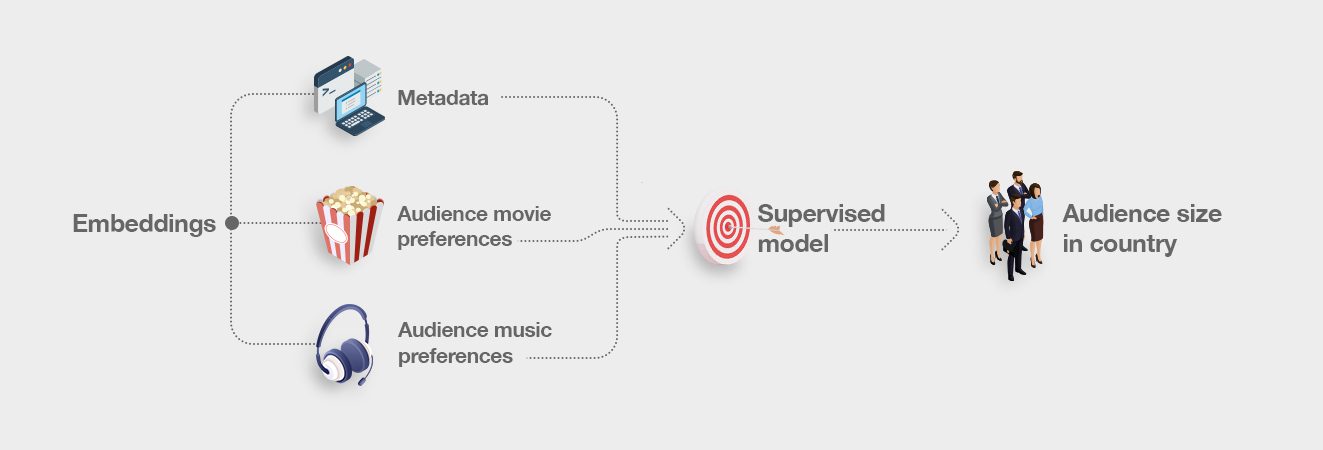Artificial Intelligence (AI) today has transformed multiple industries, including retail. The sudden spurt in AI-driven applications is driven by three major factors:
- Access to big data
- Reduction in the cost of computing
- Democratization of advanced ML because of Open-Source packages and platforms
Along with these advancements, the role of AI in driving tangible business outcomes can be boosted through three new techniques:
- Embeddings
- Causal Inference
- Reinforcement learning
Embeddings
Neural networks are the work horses of modern AI. They are made up of interconnected processing units called neurons. These neural networks are trained using existing data first. Eventually the trained neural networks are used to perform predictions and classifications. When a neural network is trained, it captures the objects that it is learning about in a compact numerical representation that goes by the technical term Embedding. The objects captured by embeddings could be anything – words, images, products, really anything for which we have data.
Imagine that a neural network could be trained to understand people’s movie watching preferences. Another neural network could be trained to understand a person’s music interests. An embedding can capture the interrelationships between each of these disparate pieces of information in a compact list of numbers called vectors.
Naive technologies do not possess this kind of semantic intelligence; they simply parrot information and don’t understand nuances and subtle relationships. So, while embeddings technology can describe your interests, preferences and personality in a very interesting manner, a naive technology would describe you in a superficial and boring manner – it would list your name, address, the model of your laptop, the apps you’ve installed, and the hours of the day when your laptop is on. In other words, naive technologies have a flavor we associate with machines, whereas embeddings technology have a flavor we associate with human intelligence. This gives embeddings immense power.
For example, embeddings can be used for assortment planning for a particular store during SuperBowl. The planning can be determined based on disparate factors such as the markets the store is catering to, popular items and guest reactions to the event.
Once we have embeddings, we can use it as features to train many other models and derive insights and drive decisions. Embeddings have already found widespread use in Natural Language Understanding, Computer Vision and Recommendation Systems. However, this is just the tip of the iceberg. Expect powerful things with this technique in the future!

Causal Inference
“Correlation is not causation”, so goes the famous adage. If so, then what is causation? And what has it got to do with AI? ML techniques irrespective of the area of application are now facing three unique challenges:
- Adaptability/Robustness: Adaptability is the ability of a system to react to a new situation that was not observed in historical data. Note how, we humans routinely “wing it” even in new situations. For example, scientists quickly determine that masks are an effective way to combat the spread of COVID-19 back in early 2020.
- Explainability: Today’s machine learning models are black boxes. It is often hard to understand why the machine took a certain decision. This creates a huge barrier for adoption of AI in the non-tech domain. It is also a big barrier for humans and AI systems to work together. “If I don’t know how an AI system makes decision, how can I work with it?”
- Cause-effect Connection: Today’s ML systems are data centric. They essentially measure how one variable or factor is related to other. However, there is no clear notion of which variable caused the output to change.
Causal inference provides the tools and techniques to express these types of questions mathematically and then answer them. In the last two decades, data scientists have developed mathematical frameworks of causal inference techniques to interact with the ML models. This has allowed us to do causal inference at scale and derive value.
In retail, we routinely use causal inference to answer many questions like:
- What caused out-of-stock in stores?
- What are the incremental sales in a particular store because of remodel?
- How effective was a promotional campaign?
This is an active area of research and I see this ‘causal revolution’ leading to more robust, explainable, and powerful AI systems.
Reinforcement Learning
The third technique that is poised to change the world of AI is Reinforcement learning (RL). RL is a paradigm where the algorithm (called the agent) learns from the environment through trial and error. Every time the algorithm takes the right decision, it is rewarded; and every time it takes a wrong decision, it is penalized. RL technique is particularly useful when we must take sequential decisions in the face of uncertainty. Some important high-profile problems where RL is now working quite well are self-driving cars, robots performing domestic tasks, and strategy games. Even in retail, RL can solve important problems like:
- Inventory Control – the problem of moving inventory from suppliers to warehouses to our stores in the right quantity at the right time, considering the uncertainties of guest demand.
- Price Control – the problem of determining the right prices to set for each of the products we sell at various stores, considering knowledge of how demand would change to price changes.
The most exciting thing today is that we are likely to have future AI systems that blend Embeddings, Causality, and Reinforcement Learning to build more compact, explainable and powerful models that deal with uncertainty effectively. This in turn can unlock tremendous business value and delight our guests in innumerable ways.
Hear Ashwin Rao, VP, Artificial Intelligence, talk about the techniques during his keynote session at the NASSCOM XperienceAI Virtual Summit 2021.
About the author:

Abhijith Neerkaje, Senior Director, Data Sciences & Analytics







